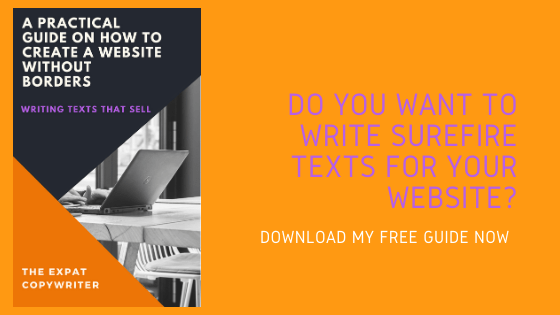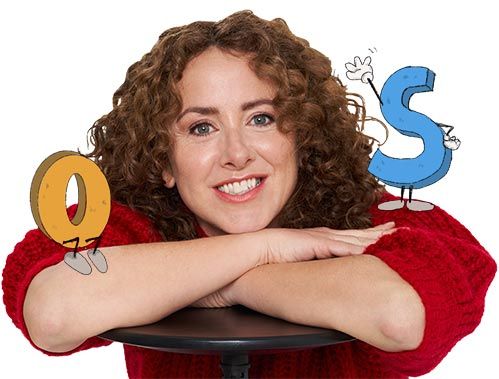Explaining concepts is not easy, ask your school math teacher.
If you have set out the goal of writing a blog to attract organic traffic and establish yourself as an authority in your field, you need to write in a clear and engaging way to keep the reader’s attention.
It’s super important that visits who land on your article stay. And they’ll stay if they find your article helpful and entertaining.
You also need to show Google that you publish quality content, that’s why people spend time reading it, so Google makes a good move sending more traffic to your blog.
Today, there are millions of blogs (about 600 million, to be precise) and the day has only 24 hours, so Internet users are increasingly choosing what’s worth reading.
If your article has attracted the reader’s attention with the headline, don’t make him leave right after reading the first paragraph because your explanations are too vague or too complicated.
Help him focus on reading by going straight to the point and maintaining his interest.
Easy to say, huh?
But how do you write in a clear and engaging way?
How do you make the reader stay and, moreover, go and read more articles?
If you stay (wink, wink) we’ll see how.
Here we go.
Tell little and big stories
I’m referring to the technique of zooming in and out. Henneke Duistermaat explains it really well in this post.
This technique refers to combining data and conclusions you have reached by studying the topic you are writing about, with little stories about you or other people that serve as examples to illustrate those points.
Imagine one of those movies that start with the camera flying over a neighbourhood of houses with a front yard. This shot places the spectator in a specific place and time.
For example, from the type of houses and cars parked at the entrance, we guess the setting is in the US sometime around the 50s and since it’s sunny and there aren’t any lush forests we think it’s probably LA or any other southern city.
That camera which flies over the neighbourhood of houses with front yards descends over a single house and gets in a room through the window where we see a teenager getting ready to leave.
We see a grimace of annoyance on her face as she looks to herself in the mirror. She doesn’t like her reflection, sighs heatedly and heads to the closet to change her clothes for the umpteenth time.
This is the zooming in and out technique.
When you are explaining a topic you zoom out by talking about concepts or data and zoom in when you give a concrete example. Share on XAnd speaking of examples, let’s see one.
Susan David in her book Emotional Agility talks about how controlling our thoughts can help us live the life we really want. Basically, emotional agility refers to the skill of moving on to something else and not being tormented by negative thoughts.
In one part of the book she tells us (I’m not writing her exact words, by the way):
“We can’t read the instructions when we’re locked inside the jar. Mindfulness helps us to be more emotionally agile by making us observe the person who is thinking the thoughts”.
This statement brings us closer to their meaning by telling us about a specific person:
“Okay, I’m having the thought that I’m a loser. As it happens to many people at some point. That’s my wounded child talking. I have a lot of thoughts every day. I can notice them and accept them all, the bad ones and the good ones, but I reserve myself the right to act only on those who are going to help me live the life I want to live”.
With the zooming in and out technique you establish your authority in your field since you explain important concepts that show you know what you are talking about. You are also able to explain these concepts in a simple way by telling a specific story.
Sharing personal experiences brings you closer to the reader who sees you as the person of flesh and blood you are. Share on XYou also help them to apply what you teach to their lives since they can relate to your story.
Let’s look at other ways of writing in a clear way to keep the reader’s attention.

The power of appealing to the senses
There is nothing that brings the reader closer than feeling she can taste, see, hear, smell or touch your words.
Sometimes adding metaphors and slowing down to explain a feeling can help a reader feel that same sensation and become more engaged.
Describe how something made you or the character you want to talk about feel:
“When my client saw that her website had been hacked, she told me that she felt as if someone had broken into her house. You open the door and find the whole house upside down, you hardly recognize it. It’s your territory, the centre of your business, and someone has snuck in to make it theirs. It was a horrible feeling of helplessness”.
With this little story, you help the reader imagine the situation and even feel it in their own skin, in the case he’s never experienced before.
If the reader has already been through this same situation, he will trust you more since you perfectly know how it feels.
Diana Athill gives us precious life lessons in her memoir Somewhere Towards the End:
“A broken heart recovers much faster from a blast than from progressive strangulation.”
A delightful metaphor that makes us feel, remember and agree with her.
Let us continue to see more ways to write in a clear and entertaining way.
Short sentences
We are all very busy and want to get the information we need quickly.
If we see that the article where we have landed has long sentences with commas and smart words that embellish but say nothing, we will lose the will to continue reading.
You have to make the words flow, make them alive. People want action.
You achieve action by building short sentences where the main characters are the subject and the verb.
Forget about the passive voice where the subject is unclear. Passivity is the opposite of action and the number one enemy of zesty writing.
When you edit your text, look at your sentences’ structure. How many verbs and adverbs are there?
Have I added too many adjectives, and can I remove some parts to make the message crisp and straightforward?
Let’s look at an example:
Our new mums’ group will help you fight loneliness and insecurity related to your baby’s first months and will provide you with the right environment to clear up your doubts more quickly so that you feel more secure and can live this special moment with joy.
Words highlighted in bold are the important ones:
Our new mums’ group will help you fight loneliness and insecurity related to your baby’s first months and will provide you with the right environment to clear your doubts more quickly so that you feel more secure and can live this special moment with joy.
Clear and concise version:
Our new mums’ group will help you fight loneliness and insecurity. We help each other by clearing up doubts so that you can live this special moment with joy.
Remember:
Who does what? The most important thing is the subject and the action verb. Don’t get lost in pompous adjectives and adverbs.
These are some of the main action verbs:
- Progress
- Improve
- Reach
- Grab
- Dazzle
- Create
- Support
- Grow
- Savour
- Imagine
- Galvanize
- Flourish
- Talk
- Win…

Write the way you speak
Do you remember the books you were assigned to read at school?
Well, don’t write like that.
I know, you still hear Margaret’s voice, your English teacher, instructing you to write long sentences with a lot of description and to use smart words.
Forget about Margaret. She wasn’t in marketing and sales.
We are not here to win the Booker Prize but to communicate in a clear and simple way the message we want to be engraved in the reader’s mind.
Be careful not to neglect the spelling and avoid swearing.
Just because you have to write in a conversational way doesn’t mean you can swear or write like in a teenager’s WhatsApp.
Always read aloud when you are editing your text.
It will help you to break long sentences and identify repetitions.
You know, practice is what will take you from writing more or less well to nailing it.
See you around!



Thank you for creating a platform that promotes kindness, compassion, and personal growth.
Thank you Reklam for reading my blog
Absolutely delightful blog! You are a true wordsmith!
Thank you Abdul, I’m glad you enjoyed it!
Your blog inspires readers to embrace a growth mindset and strive for personal excellence.
Thank you Ilan
I appreciate the inclusive and supportive community you’ve built around your blog.
Thank you Kurye. I try to write in a clear way and in a simple version of the English language so people from all nationalities can understand the concepts.
Thank you for your comment.